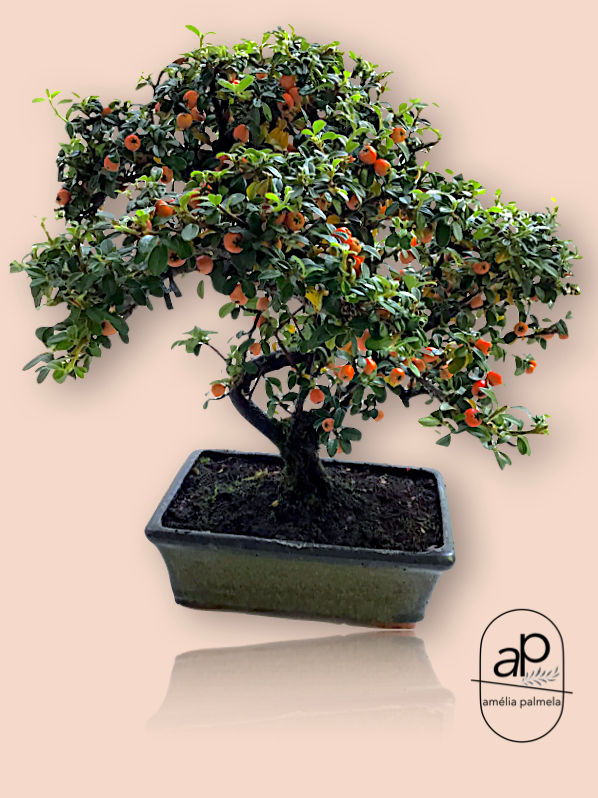Common name – Cotoneaster
Scientific Name –Cotoneaster spp.
Description: Originated from the temperate zones of Asia, Europe and Africa, it belongs to the Rosaceae family.
Slow-growing shrub, semi-deciduous, green and small leaves (there are also "variegated" species in which part of the leaf is white). Much appreciated for its white or pink flowers and fruits that can range from red to yellow or even black.
Location: Outdoors, where it can enjoy 2 to 3 hours of direct sunlight a day (ideally in the morning or late afternoon), protected from strong winds and frost.
Watering: Water the soil abundantly until enough water comes out of the drainage holes, in order to uniformly moisten the soil, always from above never by immersion, using a fine-grained watering can (there are specific ones for Bonsai).
Allow the surface layer of soil to dry slightly between each watering (to confirm whether the plant already needs water, touch the earth with your fingers).
If you have a dish under the Bonsai, never leave any water in it (to prevent the roots from rotting).
There is no advantage in spraying the leaves, just do it on days when you fertilize and if the fertilizer is for foliar application, but make sure that they arrive dry at night to avoid fungus.
Nutrition: From February to October/November, with'Fertile Bonsai' and 'Bio Bonsai' , benefits from boosts with 'P/K Bonsai' for flowering/fruiting and as a preventive fungicide.
Pruning: It has a very bushy growth, with crossed branches. Maintenance pruning we do throughout the growth. At the end of winter, before sprouting, we can carry out a formation and lowering pruning to define the structure.
As soon as we see the appearance of flower buds, we must prune carefully so as not to eliminate them.
Transplant: With 'Earth for Bonsai' in February, before budding starts.
Wiring: Can be done all year round.
Cotoneaster 12 Anos
Bonsai bowl 19x13x6 cm | Total height 35 cm
